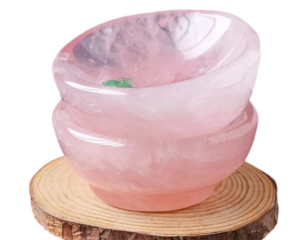Crystal Form: A set of identical faces is called a form.
- In ideal conditions, a mineral crystallises into well developed geometrical forms bounded by smooth plane surfaces (faces). The following terms are used to describe them.
- Euhedral (eu = well, hedra = face): a perfectly developed crystal
- Subhedral: faces are not properly developed.
- Anhedral: when a crystal shows no faces either due to erosion or some other reason.
- Some crystals are bounded by like faces, i.e. they all have the same properties.
- Faces with different properties are said to be unlike.
- All the like faces of a crystal constitute a crystal form.
- A crystal form made up entirely of like faces is termed a simple form e.g. Cube, Octahedron etc.
- Such forms which totally enclose a volume of space and can form solid crystals by themselves are known as closed forms. Two or more closed forms may occur in combination also.
- Forms which enclose a volume of space, only when in combination with other forms are known as open forms.
It is, however, rare to find perfectly developed crystals. Usually the crystal faces develop in a distorted fashion. Although all crystals of a particular mineral must exhibit the same combinations of symmetry elements, it does not mean that they look alike, they may show a range of crystal shapes depending on which of the crystal forms-singly or in combination – are developed. For example the cube (6 faces), octahedron (8 faces) and the rhomb -dodecahedron (12 faces) are different forms displayed by crystals with cubic symmetry.
Open Forms
- Pinacoid: A form with two (2) parallel faces having any orientation with respect to the chosen crystallographic axis. The faces forming the top and bottom of a crystal are referred to as basal pinacoid. These often terminate the faces of a prism.
- Dome: A form with two (2) intersecting faces which cut the vertical axis and one horizontal axis and are parallel to the other horizontal axis.
- Prism: A form with 3, 4, 6, 8 or 12 intersecting faces which are parallel to the vertical axis and cut the horizontal axis. This is one of the very common forms.
- Pyramid: A form with 3, 4, 6, 8 or 12 non-parallel triangular faces that meet at a point. Each face cuts the entire axis.
Closed Forms
- Bipyramid: A form with 6, 8, 12, 16 or 24 faces consisting of two pyramids on either side of the horizontal each half being a mirror image of the other.
- Rhombohedron: A set of three (3) pyramidal faces above and three (3) below which are not mirror images of each other i.e. the intersecting edges are not at right angles. This form is found only in crystals of the Trigonal system e.g. calcite.
The following forms (3 to 9) are typical for the cubic system.
- Cube or Hexahedron: A form with six (6) square faces which cut one axis and are parallel to the other two.
- Octahedron: A form with eight (8) faces, each an equilateral triangle, each face cuts all three axis at equal distances. This form is basically a bi-pyramid.
- Rhomb dodecahedron: A form with twelve faces (12), each is rhomb or lozenge-shaped. Each face cuts two axes at equal distances and is parallel to the third.
- Trapezohedron (Icositetrahedron): A form with twenty four (24) faces, each a trapezoid. Each face cuts two axes at equal distance and the third at a smaller distance.
- Tetra hexahedron: A form with twenty four (24) faces, each cube face (i.e. in a hexahedron) is further divided into four triangular faces by growth.
- Trlsoctahedron: A form with twenty four (24) faces.
- Hexoctahedron: A form with forty eight (48) faces.



























Leave a Reply
You must be logged in to post a comment.